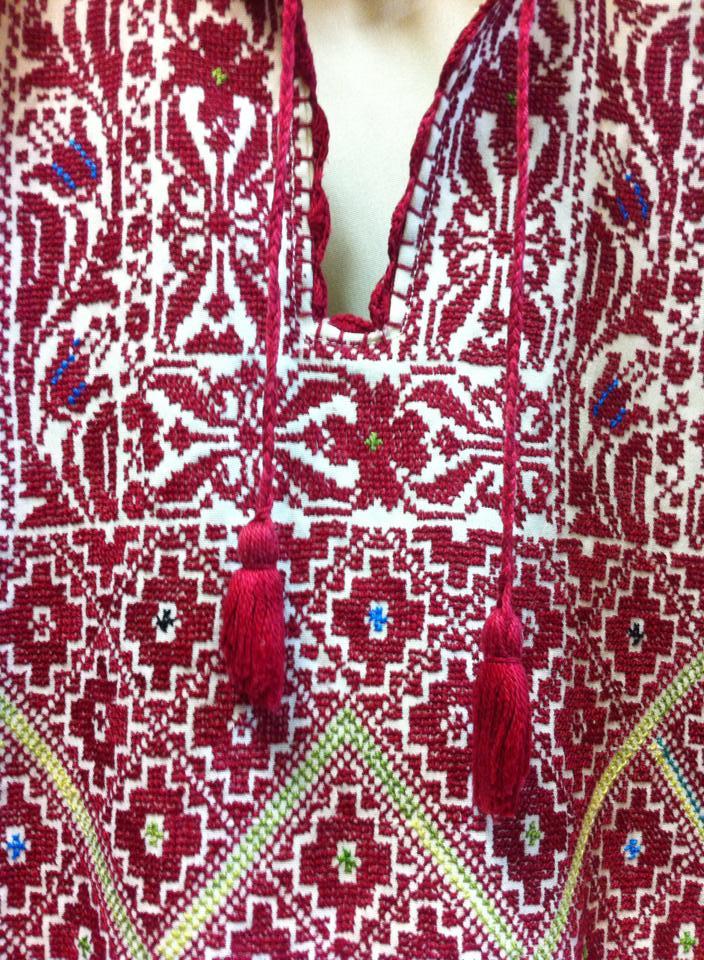
#Traditional #Palestinian #Embroidery #Vintage #Costume #Dress #Collar #Colour #Pattern #People #Land #Heritage #Culture #History #Existence #Palestine #History #MiddleEast #Textiles #MyWork #Photography #Art #Our #World
Traditional Palestinian Embroidery
Vintage Palestinian Dress
Close-up of Collar / Dress probably from Ramallah
"Textile arts have been of unique importance in the Middle East since antiquity. In every age, the crafts of spinning, weaving, dyeing and embroidery have been held in high esteem and their traditions have changed relatively little over time. This is demonstrated eloquently in Palestinian costume styles, which have remained virtually unchanged over many centuries.
Around 1500 BC, the land that would later be called Palestine became known as Canaan, “The Land of the Purple.” Its Semitic inhabitants decorated linen and woolen cloth with a precious purple dye extracted from murex sea-snails, and these textiles were prized trade items around the Mediterranean.
In Palestine, the traditional style was itself influenced by the important nearby textile centers of Syria, famous for their silk weaving since the fifth century. Syrian fabrics were used in many Palestinian costumes, and Syrian traditional dresses share a similar repertoire of motifs with their Palestinian counterparts. The influence of the Arabian Peninsula is seen in the ornate silver jewelry brought in by trade and incorporated into the Palestinian costume.
Although the influences on Palestinian costumes have been numerous, the end result is a legacy that is uniquely and distinctly Palestinian, transcending its role as an art form to become a symbol of Palestinian identity. The ancient embroidered patterns bore symbols of hope, prosperity, good health and protection, and had traditional names that reflected natural features: the moon, the cypress tree, the tree of life, Bethlehem Shatweh, 1900 the bird of paradise. Though every woman could express her creativity by her choice of patterns and their arrangement on the dress, each region of Palestine followed its own distinctive stylistic rules.
Embroidery of costume and home accessories was done—and still is done—by women who preserved the traditional patterns by copying older dresses. In so doing they created costumes of lasting beauty that have earned a special place among the ethnic folk dress traditions of the world. More significantly, this tradition of Palestinian needlework has kept alive ancient styles and symbols that have provided us with a unique window to the past."
- Hanan Karaman Munayyer / The Palestinian Heritage Foundation
There are no comments yet.